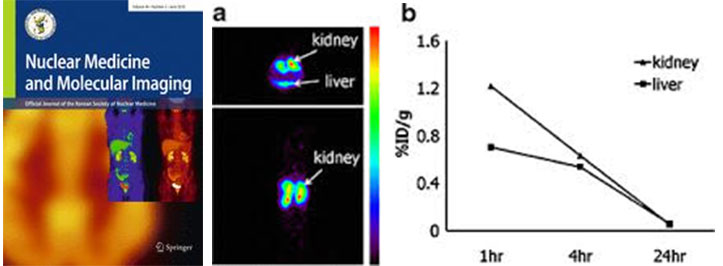Pandya et al. article entitled “A New Synthesis of TE2A — a Potential Bifunctional Chelator for 64Cu.” published in Nuclear Medicine and Molecular Imaging, 2010.
09.06.2010
The development of a new bifunctional chelator, which holds radiometals strongly in living systems, is a prerequisite for the successful application of disease-specific biomolecules to medical diagnosis and therapy. TE2A is used for the preparation of kinetically more stable Cu(II) complexes than TETA (1,4,8,11-tetraazacyclotetradecane-1,4,8,11- tetra acetic acid). Pandya et al. reported a new synthetic route to TE2A and explored its potential as a bifunctional chelator. They described the preparation of salt-free TE2A in high yield using the regioselective trans-disubstitution of benzyl bromoacetate, followed by two successive deprotection reactions. TE2A can be used by itself as a bifunctional chelator without any further structural modification.
Nucl. Med. Mol. Imaging, 2010,44, 185-192.
Web: https://link.springer.com/article/10.1007/s13139-010-0031-2

Dr. Manoj B. Gawande joined as a Research Associate position at Department of Chemistry, Faculty of Science and Technology, New University of Lisbon, Quinta da Torre, 2829-516 Caparica, Lisbon, Portugal.
10.03.2010


